Arnett Cobb – Jazz Saxophonist
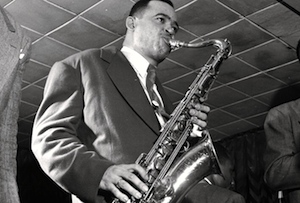 A stomping Texas tenor player in the tradition of Illinois Jacquet, very robust and sometimes raw, who mixes the musical vocabularies of swing, bebop, blues and R&B, and originator of the “Open Prairie” tone and “Southern Preacher” style of playing. Arnett Cobb has that honking, bar-walking saxophone sound that used to blast from jukeboxes coast-to-coast. There was always excitement elicited by Cobb’s uninhibited, blasting style which earned him the label “Wild Man of the Tenor Sax.”
A stomping Texas tenor player in the tradition of Illinois Jacquet, very robust and sometimes raw, who mixes the musical vocabularies of swing, bebop, blues and R&B, and originator of the “Open Prairie” tone and “Southern Preacher” style of playing. Arnett Cobb has that honking, bar-walking saxophone sound that used to blast from jukeboxes coast-to-coast. There was always excitement elicited by Cobb’s uninhibited, blasting style which earned him the label “Wild Man of the Tenor Sax.”
His saxophone technique and music style directly influenced Illinois Jacquet, Gene Ammons, Johnny Griffin, Houston Person, Sonny Stitt, Stanley Turrentine, King Curtis, and Eddie “Lockjaw” Davis to name a few.
Lennie Tristano – Jazz Pianist
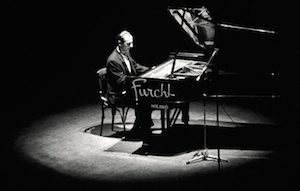 Lennie Tristano occupies a rare position not only in jazz history but in the history of twentieth-century music. Emerging from an era when modernism was the guiding principle in art, Tristano explored musical avenues that were avant-garde even by modernism’s experimental standards. In so doing, he tested and transcended the boundaries of jazz. This ascetic, irascible and uncompromising genius took the implications of a “cool” jazz style – one that concentrated on quiet delivery, oblique effects, suppressed emotion and avoidance of theatricality – and pushed it to its purest extreme. He is one of the few in jazz whose achievements as a performer and as an educator are of equal strength.
Lennie Tristano occupies a rare position not only in jazz history but in the history of twentieth-century music. Emerging from an era when modernism was the guiding principle in art, Tristano explored musical avenues that were avant-garde even by modernism’s experimental standards. In so doing, he tested and transcended the boundaries of jazz. This ascetic, irascible and uncompromising genius took the implications of a “cool” jazz style – one that concentrated on quiet delivery, oblique effects, suppressed emotion and avoidance of theatricality – and pushed it to its purest extreme. He is one of the few in jazz whose achievements as a performer and as an educator are of equal strength.
Sonny Criss – Jazz Saxophonist
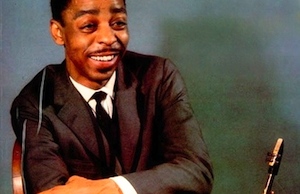 Criss was a bop saxophonist, strongly influenced at first by Charlie Parker. He played with unparalleled authority and facility on the instrument, but because he spent most of his career on the West Coast, with a brief stay in Paris in the ’70s, Criss never gained the recognition of his East Coast counterparts like Sonny Stitt and Cannonball Adderley.
Criss was a bop saxophonist, strongly influenced at first by Charlie Parker. He played with unparalleled authority and facility on the instrument, but because he spent most of his career on the West Coast, with a brief stay in Paris in the ’70s, Criss never gained the recognition of his East Coast counterparts like Sonny Stitt and Cannonball Adderley.
Sonny’s style was distinctively mature, producing a warm, rich tone and a prominent vibrato. He was capable of playing dazzling runs with such effortless grace that they never sounded ostentatious. An excellent jazz musician, through lack of opportunities Criss never gained the recognition he deserved. Sonny is remembered fondly by almost everyone who ever heard him play. He had an innate ability to communicate.
Mulgrew Miller – Jazz Pianist
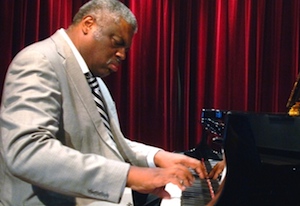 Mulgrew Miller, a jazz pianist with truthful invention, harmonic intellectualism and a keen sense of sophistication in his compositions and improvisations, was a fixture in the postbop mainstream for more than 30 years. While Miller was a highly distinguished and much sought after sideman, it was also as a leader that he built such a high degree of respect from both fans and peers, his McCoy Tyner-ish style the perfect amalgam of hard swinging post bop and pristine technique, through which he added a sharp contemporary harmonic edge to create his own modal style.
Mulgrew Miller, a jazz pianist with truthful invention, harmonic intellectualism and a keen sense of sophistication in his compositions and improvisations, was a fixture in the postbop mainstream for more than 30 years. While Miller was a highly distinguished and much sought after sideman, it was also as a leader that he built such a high degree of respect from both fans and peers, his McCoy Tyner-ish style the perfect amalgam of hard swinging post bop and pristine technique, through which he added a sharp contemporary harmonic edge to create his own modal style.
Mr. Miller developed his voice in the 1970s, combining the bright precision of bebop, as exemplified by Bud Powell and Oscar Peterson, with the clattering intrigue of modal jazz, especially as defined by McCoy Tyner. His balanced but assertive style was a model of fluency, lucidity and bounce.
Billy Eckstine – Jazz Vocalist
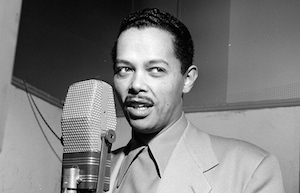 Billy Eckstine’s smooth baritone voice and distinctive vibrato broke down barriers throughout the 1940′s as a singer of ballads and a bandleader of the swing era. The Billy Eckstine Orchestra was the first bop big-band, and its leader reflected bop innovations by stretching his vocal harmonics into his normal ballads.
Billy Eckstine’s smooth baritone voice and distinctive vibrato broke down barriers throughout the 1940′s as a singer of ballads and a bandleader of the swing era. The Billy Eckstine Orchestra was the first bop big-band, and its leader reflected bop innovations by stretching his vocal harmonics into his normal ballads.
Eckstine, popularly known as Mr. B, put together a group of the most talented young players he encountered, and the roster would read like an account of the performers who would dominate jazz over the next two decades. Among those who passed through Eckstine’s band were Charlie Parker, Miles Davis, Sarah Vaughan, Dizzy Gillespie, Fats Navarro, Gene Ammons, Dexter Gordon, and Art Blakey to name a few.
Sonny Clark – Jazz Pianist
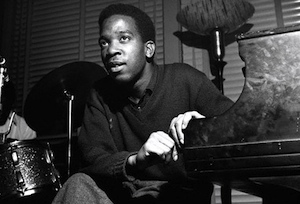 Like Fats Navarro and Charlie Parker before him, Sonny Clark’s life was short but it burned with musical intensity. Influenced deeply by Bud Powell, Clark nonetheless developed an intricate and hard-swinging harmonic sensibility that was full of nuance and detail. Regarded as the quintessential hard bop pianist, Clark never got his due before he passed away in 1963 at the age of 31, despite the fact that it can be argued that he never played a bad recording date either as a sideman or as a leader.
Like Fats Navarro and Charlie Parker before him, Sonny Clark’s life was short but it burned with musical intensity. Influenced deeply by Bud Powell, Clark nonetheless developed an intricate and hard-swinging harmonic sensibility that was full of nuance and detail. Regarded as the quintessential hard bop pianist, Clark never got his due before he passed away in 1963 at the age of 31, despite the fact that it can be argued that he never played a bad recording date either as a sideman or as a leader.
Pianist Sonny Clark was a consummate hard-bopper who made only a handful of recordings as a leader, but appears on literally dozens of albums as a sideman. It can be argued that he never played a bad recording date either as a sideman or as a leader.
Don Menza – Jazz Saxophonist
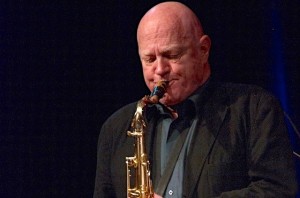 Don Menza is a powerful tenor saxophonist, with an dynamic and distinctive sound and soloing style. Born in Buffalo, New York in 1936, Menza started playing tenor saxophone when he was 13. After getting out of the Army, he was with Maynard Ferguson’s Orchestra (1960-1962) as both a soloist and an arranger.
Don Menza is a powerful tenor saxophonist, with an dynamic and distinctive sound and soloing style. Born in Buffalo, New York in 1936, Menza started playing tenor saxophone when he was 13. After getting out of the Army, he was with Maynard Ferguson’s Orchestra (1960-1962) as both a soloist and an arranger.
A short tenure with Stan Kenton and a year leading a quintet in Buffalo preceded a period living in Germany (1964-1968). After returning to the U.S., he joined Buddy Rich’s 1968 big band in the “jazz tenor” chair, recording the famous solo cadenza on “Channel 1 Suite” (Recorded “live” at Caesar’s Palace, Las Vegas) that utilized circular breathing and has become known as a classic among music educators and musicians alike.
Rob McConnell & The Boss Brass
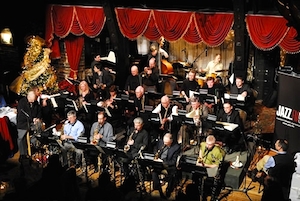 “The Best Damn Band In The Land” may have been coined by Rob McConnell himself, for one of the dozens of albums he recorded with his legendary big band, but it wasn’t an undeserved boast. Rob McConnell & The Boss Brass set a standard and defined the Canadian sound for big band music for decades.
“The Best Damn Band In The Land” may have been coined by Rob McConnell himself, for one of the dozens of albums he recorded with his legendary big band, but it wasn’t an undeserved boast. Rob McConnell & The Boss Brass set a standard and defined the Canadian sound for big band music for decades.
Rob McConnell assembled the original Boss Brass from Toronto’s finest studio musicians. The instrumentation of the The Boss Brass was originally sixteen pieces, consisting of trumpets, trombones, french horns and a rhythm section, but no saxophones (woodwinds). McConnell introduced a sax section in 1970, and expanded the trumpet section to include a fifth trumpet player in 1976, bringing the total to 22 members.
Tina Brooks – Jazz Saxophonist
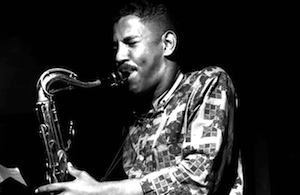 Tenor saxophonist Tina Brooks was a supremely trained hard bopper with a passionate full sound and soulful compositional prowess. Tina Brooks should have been a major jazz artist, but his legacy is confined to a series of dates that he did for Blue Note as a sideman and leader. Brooks ran into trouble at the height of his career and spent the last decade of his life unsuccessfully trying to find his way back. Brooks was one of the most brilliant, if not underrated tenor saxophonists in modern jazz.
Tenor saxophonist Tina Brooks was a supremely trained hard bopper with a passionate full sound and soulful compositional prowess. Tina Brooks should have been a major jazz artist, but his legacy is confined to a series of dates that he did for Blue Note as a sideman and leader. Brooks ran into trouble at the height of his career and spent the last decade of his life unsuccessfully trying to find his way back. Brooks was one of the most brilliant, if not underrated tenor saxophonists in modern jazz.
Brooks is best known for his work for Blue Note Records between 1958 and 1961, recording primarily as a sideman with Kenny Burrell, Freddie Hubbard, Jackie McLean, Freddie Redd, and Jimmy Smith.
Supersax
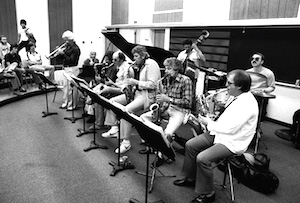 In the early ’70s, saxophonist Med Flory and bassist Buddy Clark conceived a brilliant idea to form a group (primarily a reed section with rhythm) that would use orchestrated arrangements of saxophonist Charlie Parker’s transcendent bop solos as the basis for its music. As for a name, nothing less than Supersax would suffice.
In the early ’70s, saxophonist Med Flory and bassist Buddy Clark conceived a brilliant idea to form a group (primarily a reed section with rhythm) that would use orchestrated arrangements of saxophonist Charlie Parker’s transcendent bop solos as the basis for its music. As for a name, nothing less than Supersax would suffice.
The nine-piece group made its debut in 1972 and was an immediate hit with US audiences on the West Coast and fans around the world. Supersax produced a dozen albums and earned a Grammy in 1974 for Best Performance by a Jazz Group. Besides its co-founders, the Supersax alumni roster embodies such well-known names as Bill Perkins, Warne Marsh, Conte Candoli, Jack Nimitz, Frank Rosolino, Lanny Morgan, Jake Hanna, Lou Levy, Carl Fontana, Blue Mitchell and Jay Migliori.
Thad Jones – Jazz Trumpeter | Composer
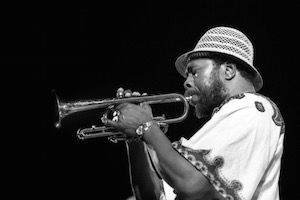 Trumpeter Thad Jones reinvigorated the big-band genre through his harmonically rich arrangements and compositions for pianist and bandleader William “Count” Basie’s mid-fifties orchestra, and the groundbreaking ensemble he co-led with for a dozen years with drummer Mel Lewis.
Trumpeter Thad Jones reinvigorated the big-band genre through his harmonically rich arrangements and compositions for pianist and bandleader William “Count” Basie’s mid-fifties orchestra, and the groundbreaking ensemble he co-led with for a dozen years with drummer Mel Lewis.
Universally admired by musical peers for his charts, bassist Charles Mingus once called Jones “the greatest trumpet player I’ve heard in this life.” Trumpeter Tom Harrell said Jones’s imaginative tone was “like Louis Armstrong on acid.”
Jones’ big-band arranging style was unique, especially from the standpoint of featuring dissonant voicings in a tonal context. His best known composition is the standard – “A Child is Born.”
Tubby Hayes – Jazz Saxophonist
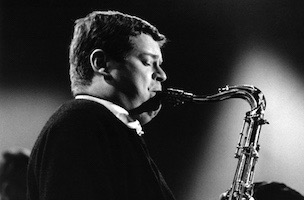 Tubby Hayes was one of England’s top and beloved jazz musicians of the 1950s and ’60s. Tubby Hayes was a fine hard bop stylist on tenor and occasionally vibes and flute. A professional at 15, Hayes played with Kenny Baker and in the big bands of Ambrose, Vic Lewis, and Jack Parnell during 1951-1955. Tubby Hayes was a prodigy who seemed to master nearly every musical task he attempted.
Tubby Hayes was one of England’s top and beloved jazz musicians of the 1950s and ’60s. Tubby Hayes was a fine hard bop stylist on tenor and occasionally vibes and flute. A professional at 15, Hayes played with Kenny Baker and in the big bands of Ambrose, Vic Lewis, and Jack Parnell during 1951-1955. Tubby Hayes was a prodigy who seemed to master nearly every musical task he attempted.
He led his own group after that, and started doubling on vibes in 1956. Hayes co-led the Jazz Couriers with Ronnie Scott (1957-1959), and appeared in the U.S. a few times during 1961-1965. He headed his own big band in London, sat in with Duke Ellington’s Orchestra in 1964, and was featured at many European festivals. In the United States, Hayes was known as a lightning-fast hard bopper.
Sam Noto – Jazz Trumpeter
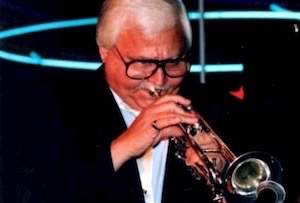 Sam Noto is acclaimed jazz trumpeter and bop soloist. Noto has worked throughout North America with some of the biggest names and best bands in jazz, including Stan Kenton, Charlie Parker, Count Basie, Dizzy Gillespie, Buddy Rich, Red Rodney, Don Menza, Joe Romano, Louie Bellson, Frank Rossolino and Mel Lewis to name a few.
Sam Noto is acclaimed jazz trumpeter and bop soloist. Noto has worked throughout North America with some of the biggest names and best bands in jazz, including Stan Kenton, Charlie Parker, Count Basie, Dizzy Gillespie, Buddy Rich, Red Rodney, Don Menza, Joe Romano, Louie Bellson, Frank Rossolino and Mel Lewis to name a few.
Noto was invited to join Stan Kenton’s band as lead trumpet player while still in his early 20’s and played with Kenton full-time until 1958, and again in 1960 after a year-long stint touring Europe with Louie Bellson and Pearl Bailey in 1959. He was also a member of the Count Basie Orchestra for two separate periods between 1964 and 1967.
He worked primarily in Las Vegas after 1969 until relocating to Toronto in 1975. While in Vegas he became acquainted with trumpeter Red Rodney who was influential in Noto’s prolific recording career with Xanadu.
Jimmy Forrest – Jazz Saxophonist
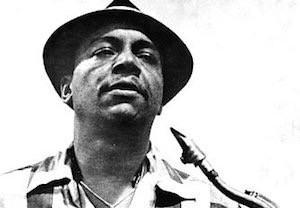 Forrest was a big, rich, deep-toned tenor saxophonist who gave his all during every performance. Jimmy’s heart was always in hard swinging jazz and he enjoyed a brand of stomping, soulful jazz. Forrest was best known for his honking solo in “Night Train,” which topped the R&B charts at #1 for seven weeks in 1952.
Forrest was a big, rich, deep-toned tenor saxophonist who gave his all during every performance. Jimmy’s heart was always in hard swinging jazz and he enjoyed a brand of stomping, soulful jazz. Forrest was best known for his honking solo in “Night Train,” which topped the R&B charts at #1 for seven weeks in 1952.
Forrest was a full-service tenor saxophonist who emphasized rocking playing drenched in blues but whose abilities extended much further. Experienced with bands from Fate Marable to Duke Elllington, he interpreted a wide range of music and had a lyrical touch with ballads. Forrest’s heart was always in swinging jazz and he enjoyed playing in small combos with artists such as Harry “Sweets” Edison and Al Grey.
Joe Farrell – Jazz Saxophonist
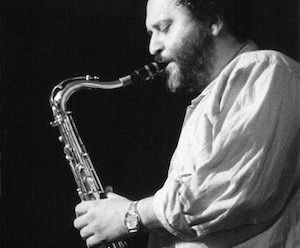 Mr. Farrell moved to New York, where he worked and recorded with Maynard Ferguson, Jaki Byard, Charles Mingus, the Thad Jones-Mel Lewis Orchestra and the Elvin Jones Trio.
Mr. Farrell moved to New York, where he worked and recorded with Maynard Ferguson, Jaki Byard, Charles Mingus, the Thad Jones-Mel Lewis Orchestra and the Elvin Jones Trio.
Still best known as a tenor saxophonist, in this period Mr. Farrell also began to display his talents on the soprano saxophone and the flute. It was on these instruments that he was most prominently featured when he joined Corea`s influential jazz-fusion group Return to Forever in 1972.
Best known as a tenor saxophonist, Farrell also began to display his talents on the soprano saxophone and flute. It was on these instruments that he was prominently featured when he joined Corea`s influential jazz-fusion group Return to Forever in 1972. Farrell also began recording under his own name, making many popular albums for CTI, such as “Outback”, “Moon Germs”, “Penny Arcade” and “Canned Funk”, which combined together his hard bop style with some pop and fusion elements.
Ronnie Mathews – Jazz Pianist
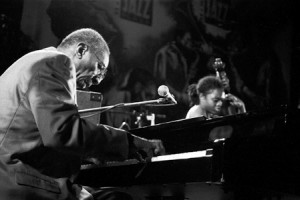 Ronnie Mathews, a jazz pianist whose recorded output as a leader was sparse but whose résumé as a sideman with stars of jazz was substantial.
Ronnie Mathews, a jazz pianist whose recorded output as a leader was sparse but whose résumé as a sideman with stars of jazz was substantial.
Ronnie Mathews is barely known today, but the pianist was a distinguished sideman starting in 1960 and a leader through the years. As a sideman, he appeared on Freddie Hubbard’s Breaking Point (1964), Lee Morgan’s Rumproller (1965) Max Roach’s Drums Unlimited (1965) and Dexter Gordon’s The Homecoming (1976), as well as on albums by many leading jazz stars. As a leader, one of Mathews’ finest albums was—Doin’ the Thang!, recorded for Prestige in December 1963. He was also a member of Art Blakey’s Jazz Messengers in the late 1950s through the 60′s.
Cannonball Adderley – Jazz Saxophonist
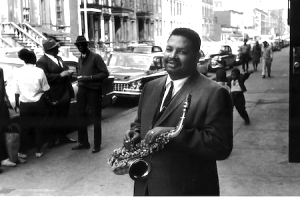 Julian “Cannonball” Adderley was the first musician to take listeners’ ears beyond the monumental achievements of Charlie Parker on the saxophone. Adderley’s alto helped define the hard-bop sound, with his combination of blistering technique and a seemingly effortless ability to meld the blues, gospel, and funk with bebop.
Julian “Cannonball” Adderley was the first musician to take listeners’ ears beyond the monumental achievements of Charlie Parker on the saxophone. Adderley’s alto helped define the hard-bop sound, with his combination of blistering technique and a seemingly effortless ability to meld the blues, gospel, and funk with bebop.
One of the great alto saxophonists, Cannonball Adderley had an exuberant and happy sound that communicated immediately to listeners. His intelligent presentation of his music (often explaining what he and his musicians were going to play) helped make him one of the most popular of all jazzmen.
Two words best encapsulate the music of alto saxophonist Julian “Cannonball” Adderley: “joy” and “soul.”
Bud Powell – Jazz Pianist
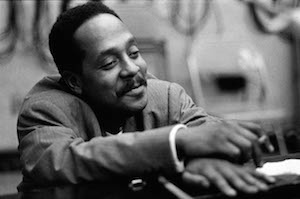 Powell was the most important pianist in the early bop style, and his innovations transformed the jazz pianism of his time. A prodigious technician, he was able at will to reproduce the demanding styles of Art Tatum and Teddy Wilson, echoes of which can sometimes be heard in his ballad performances.
Powell was the most important pianist in the early bop style, and his innovations transformed the jazz pianism of his time. A prodigious technician, he was able at will to reproduce the demanding styles of Art Tatum and Teddy Wilson, echoes of which can sometimes be heard in his ballad performances.
At fast and medium tempos, however, he preferred the spare manner that he devised in the early 1940s: rapid melodic lines in the right hand punctuated by irregularly spaced, dissonant chords in the left. This almost antipianistic style (which was adopted by most bop pianists of the time) left him free to pursue linear melody in the manner of bop wind players, and it was as a melodist that Powell stood apart from his many imitators.
Pat Labarbera – Jazz Saxophonist
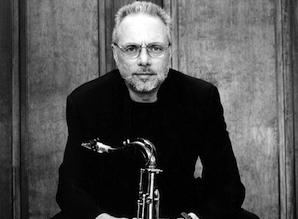 Pat Labarbera, saxophonist, flutist, clarinetist, composer, jazz educator was born in Mt. Morris, New York and spent the first thirty years of his life in the United States before moving to Toronto in 1974. His father taught the basics of music to Pat and his two younger brothers, John (a gifted arranger/trumpeter) and Joe (a highly accomplished drummer). He studied at the famed Berklee College of Music, and soon after graduating, began to make his presence felt with the best of the American big bands.
Pat Labarbera, saxophonist, flutist, clarinetist, composer, jazz educator was born in Mt. Morris, New York and spent the first thirty years of his life in the United States before moving to Toronto in 1974. His father taught the basics of music to Pat and his two younger brothers, John (a gifted arranger/trumpeter) and Joe (a highly accomplished drummer). He studied at the famed Berklee College of Music, and soon after graduating, began to make his presence felt with the best of the American big bands.
Pat LaBarbera was already well-known for his solo work with the bands of Louis Bellson, Woody Herman, and for seven years, touring and recording as featured tenor saxophone soloist with the Buddy Rich Band throughout every major city in the U.S., Europe, and Japan. Universally considered one of the world’s most exciting saxophonists.
